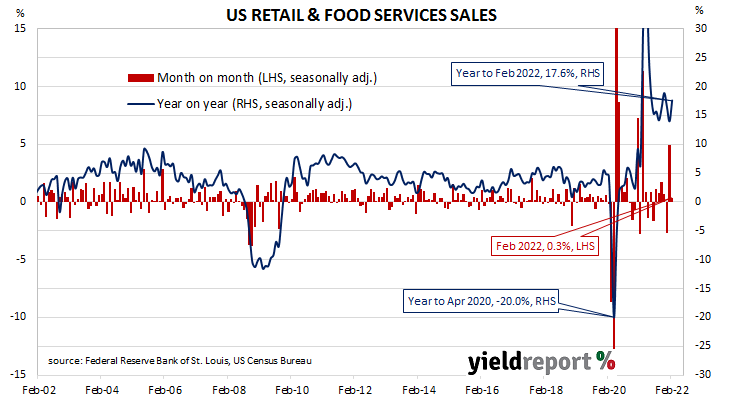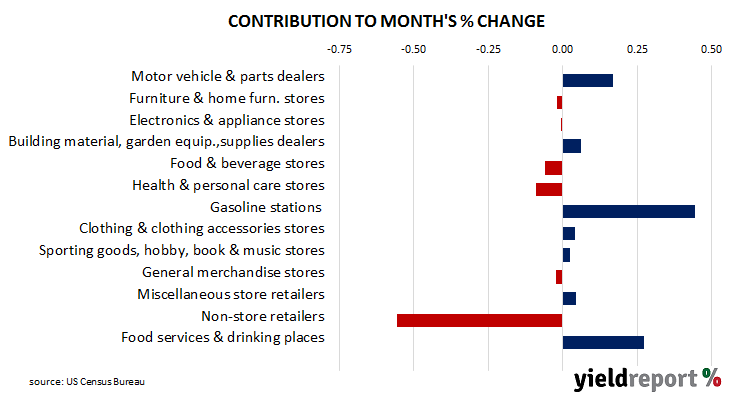Summary: US retail sales up 0.3 in February; rise a touch lower than 0.4% gain expected; January revision outweighs weaker-than-expected result; consumer confidence “weakness” suggests sales may slow in coming months; rises in six of twelve retail categories; “non-store” segment” the largest single influence, falls 3.7%.
US retail sales had been trending up since late 2015 but, commencing in late 2018, a series of weak or negative monthly results led to a drop-off in the annual growth rate below 2.0%. Growth rates then increased in trend terms through 2019 and into early 2020 until pandemic restrictions sent it into negative territory. A “v-shaped” recovery then took place which was followed by some short-term spikes as federal stimulus payments hit US households in the first and second quarters of 2021.
According to the latest “advance” numbers released by the US Census Bureau, total retail sales increased by 0.3% in February. The rise was a touch lower than the 0.4% gain which had been generally expected and considerably less than January’s 4.9% after it was revised up from 3.8%. However, on an annual basis, the growth rate still accelerated from January’s revised figure of 14.0% to 17.6%.
“Upward revisions to the January readings…more than outweigh the weaker-than-expected monthly growth figures,” said NAB economist Taylor Nugent.
The figures were released on the same day as the FOMC meeting and US Treasury bond yields moved higher on the day with the exception of those at the ultra-long end. By the close of business, the 2-year Treasury yield had gained 9bps to 1.95%, the 10-year yield had added 4bps to 2.19% while the 30-year yield finished 2bps lower at 2.46%.
ANZ economist John Bromhead expects consumer spending to face some headwinds in the short-term. “The recent weakness in consumer confidence suggests that sales may weaken further in coming months, while the COVID lockdown in Shenzhen and restrictions in other parts of China may affect availability of some consumer goods in the US.”
Six of the twelve categories recorded higher sales over the month. The “Non-store retailers” segment, again provided the largest single influence on the overall result, this time falling by 3.7% for the month but rising by 13.8% for the year to February. “Gas station” sales increased by 5.3% over the month and by 36.4% over the year.
The non-store segment includes vending machine sales, door-to-door sales and mail-order sales but nowadays this segment has become dominated by online sales. It now accounts for nearly 15% of all US retail sales and it is the second- largest segment after vehicles and parts.



